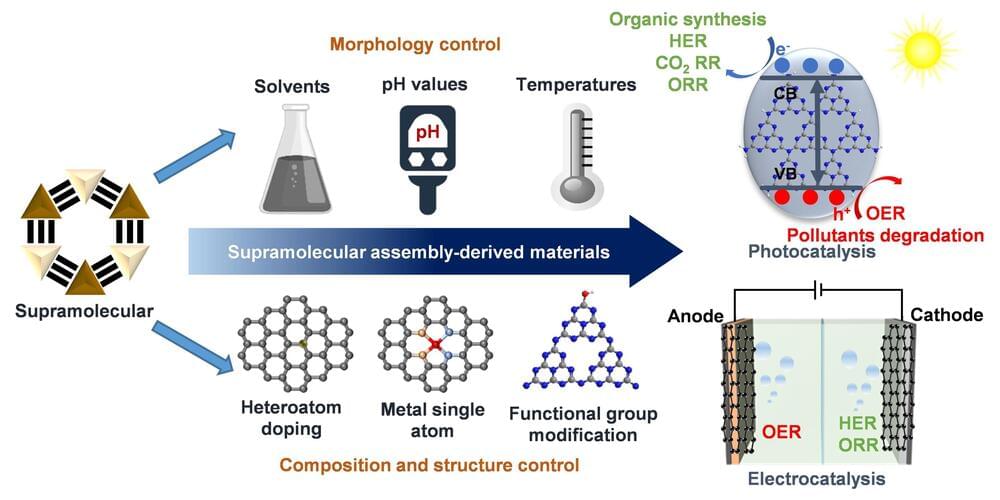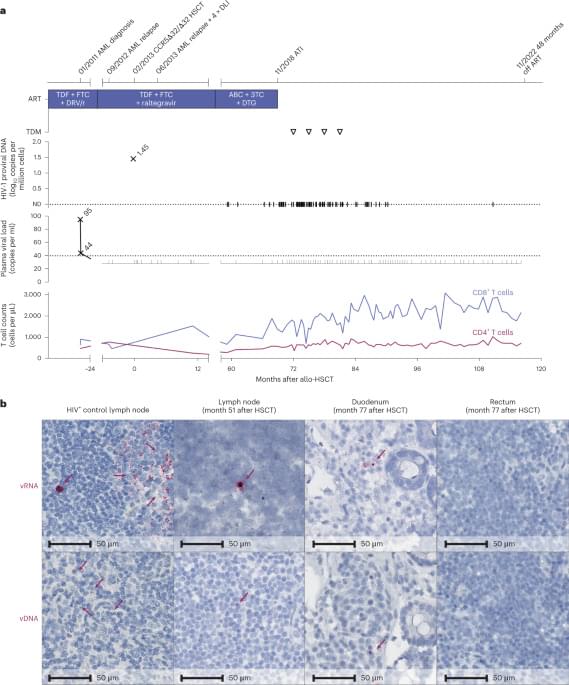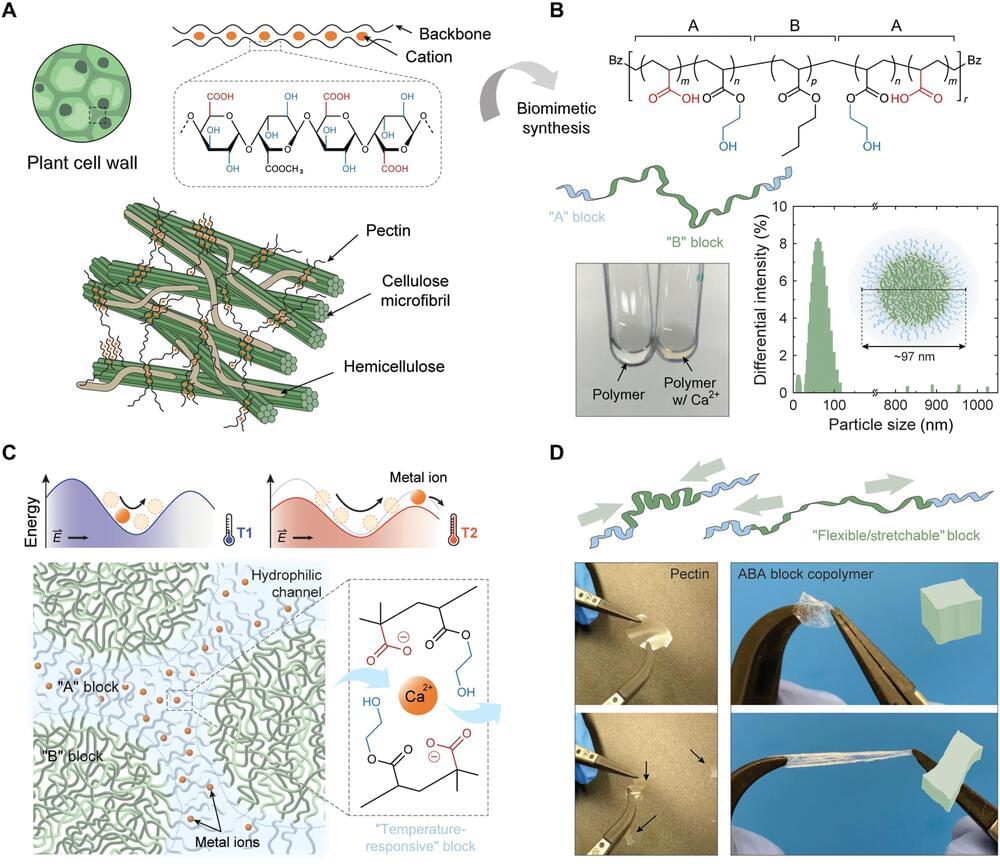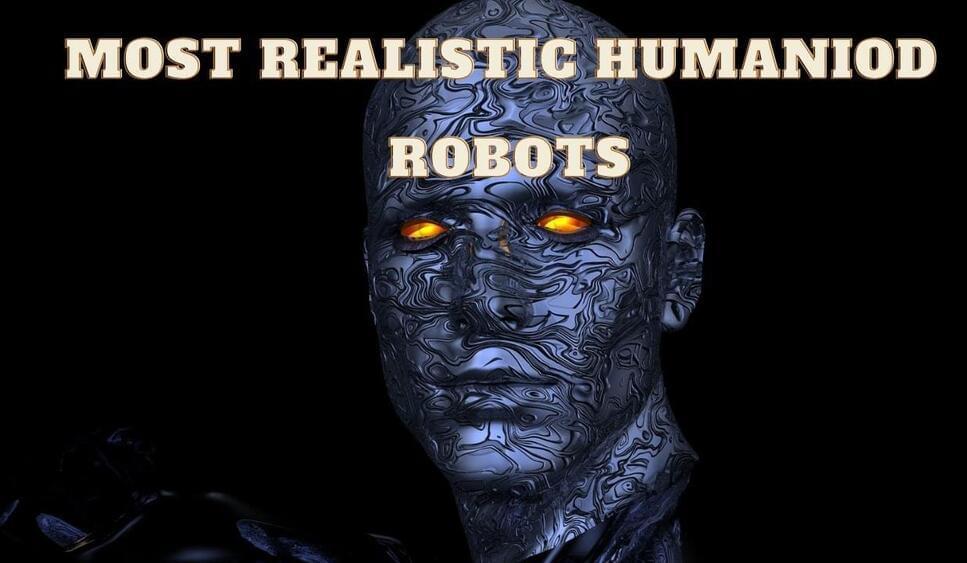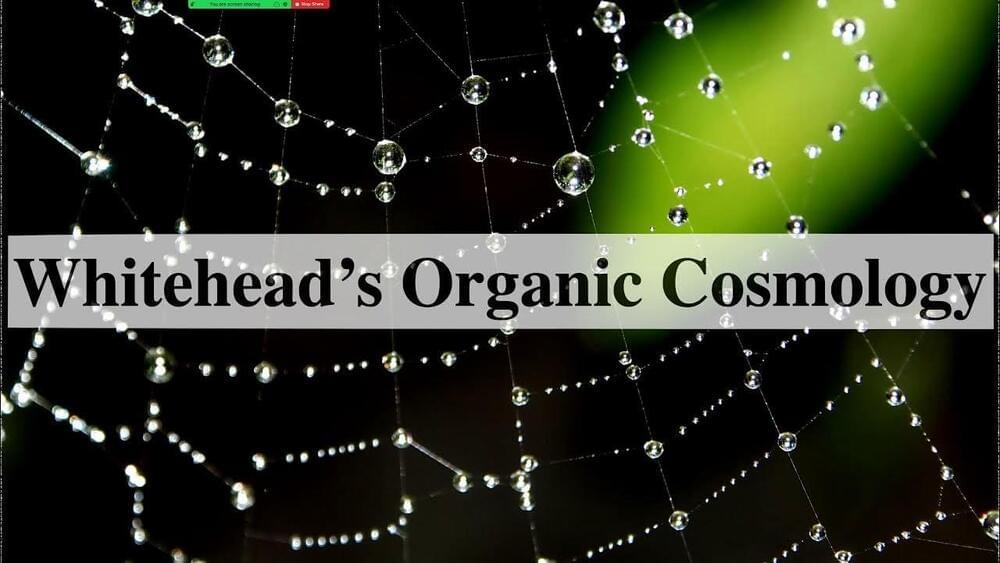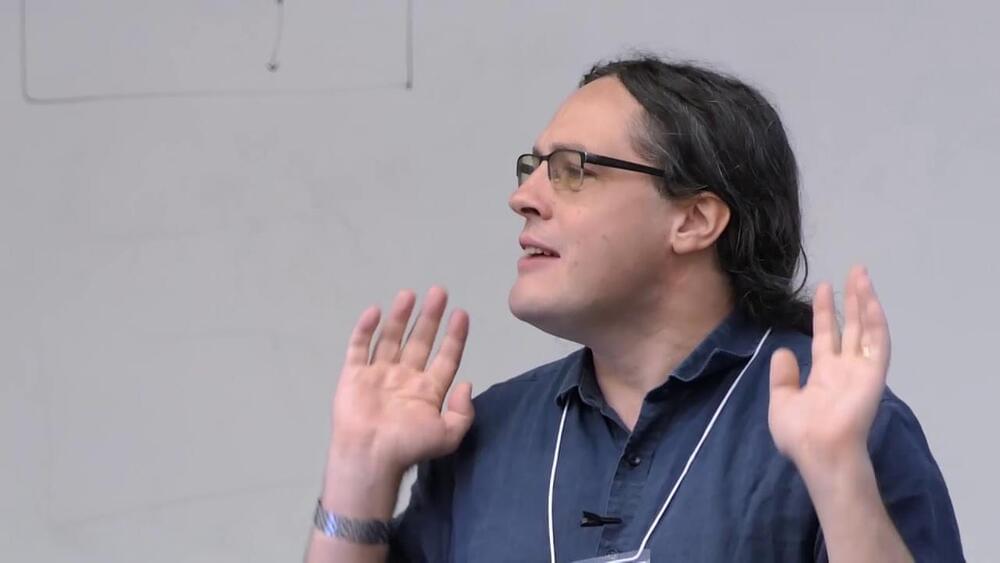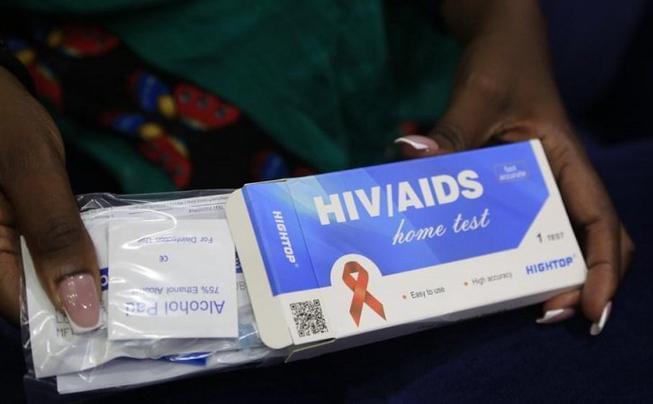Feb 20, 2023
Supramolecular assembly assists the synthesis of highly active carbon-nitrogen-based photo/electrocatalysts
Posted by Dan Breeden in categories: chemistry, energy
In a paper published in the journal National Science Open, the morphology and structure regulation methods of supramolecular assembly are summarized. Then, recent progresses of supramolecular assembly derived carbon-nitrogen-based materials for photo/electrocatalysis are discussed. Furthermore, the developments and challenges in future are prospected.
The sustainable energy storage and conversion technologies based on redox reactions are promising pathway to solve energy issues. However, there is still lack of low-cost, ecofriendly and highly active photo/electrocatalysts, which play a crucial role in the redox reactions.
In this review, the author first summarized the effects of temperature, solvent type, pH value and monomer on the morphology and structure of the supramolecular assembly. Then, the effects of morphology and structure regulation on the physicochemical properties of supramolecular assembly-derived carbon-nitrogen-based materials were discussed, which determined the essential properties of catalysts for a specific photo/electrocatalytic reaction.
